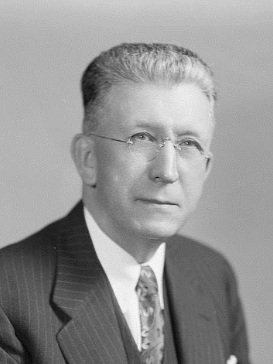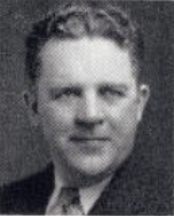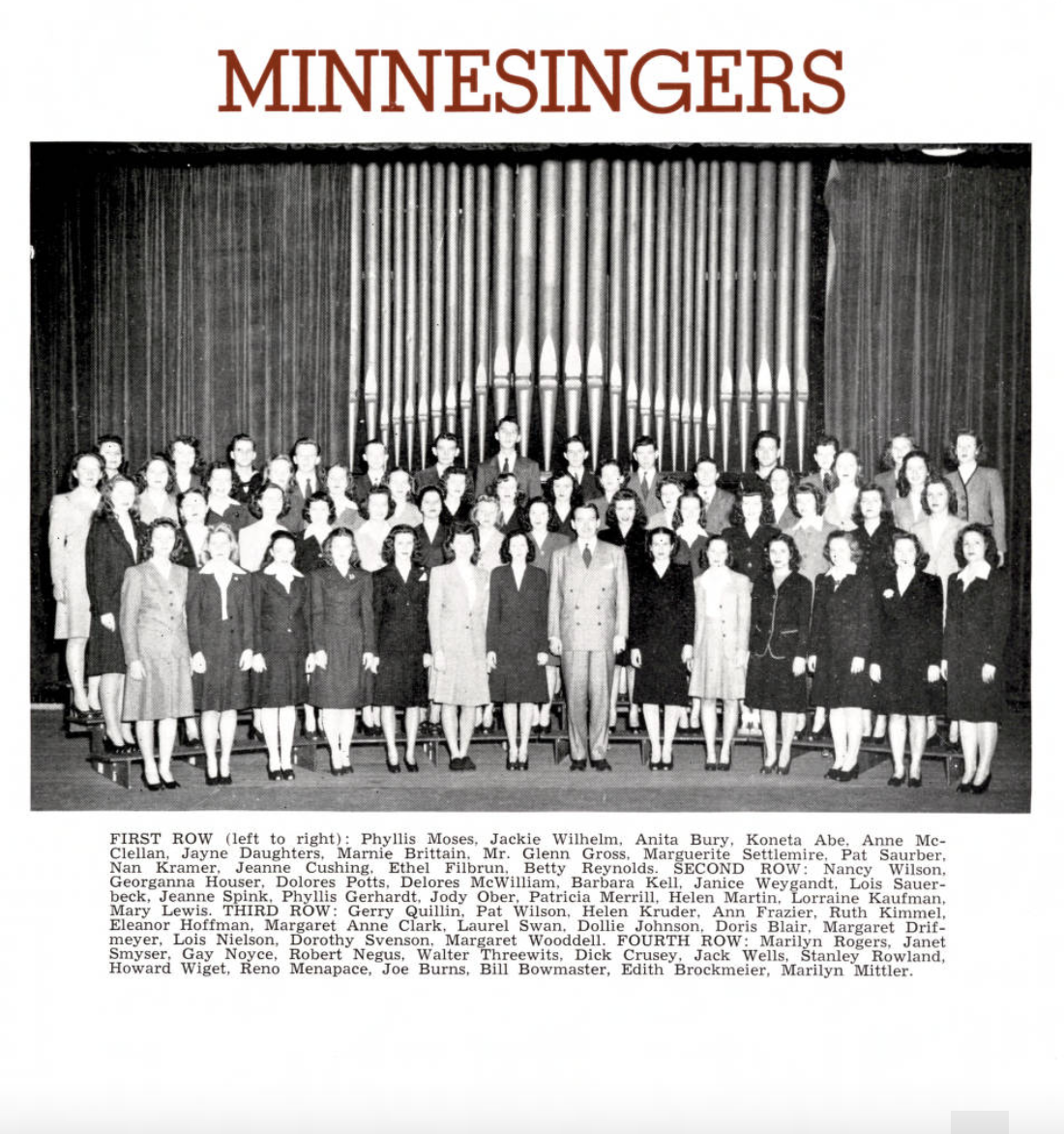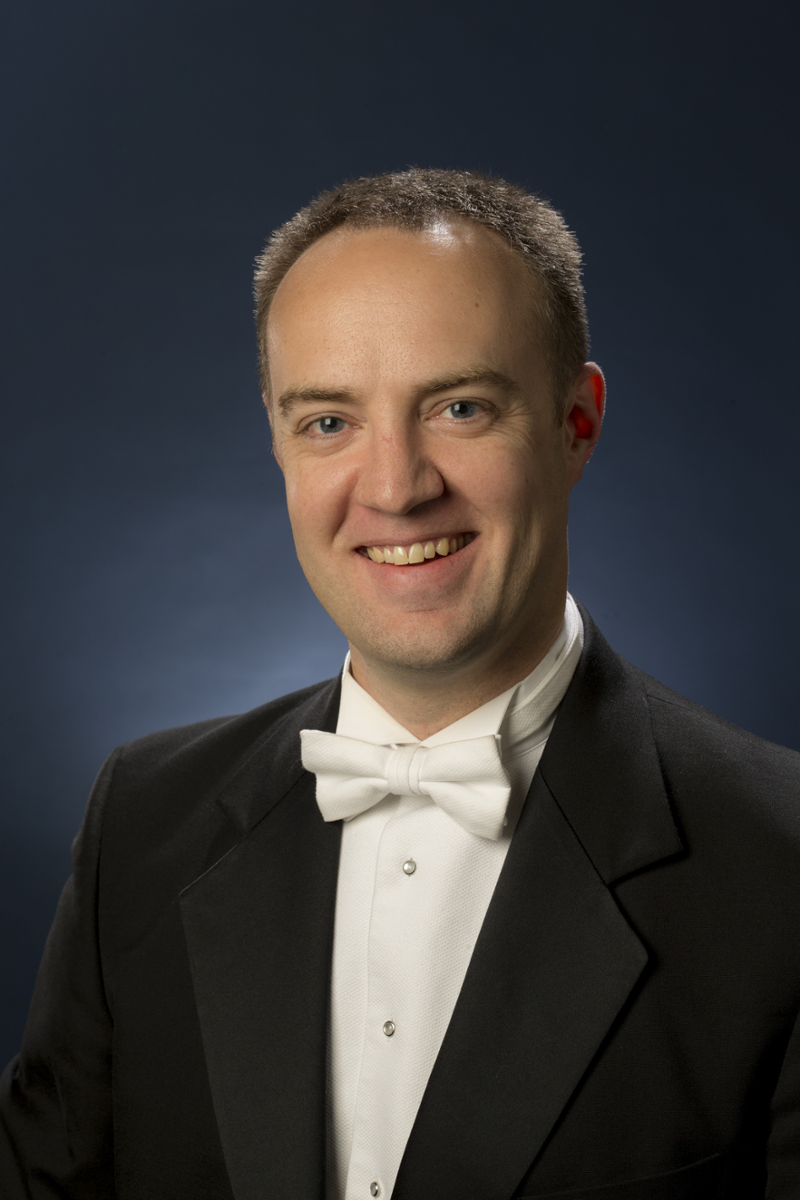“Conceived at the Oxford Train Depot in 1907, the Miami University Men's Glee Club has since become one of the most respected collegiate choruses in the world.”
In 1906, Dr. Raymond Burke began his career as a geology professor at Miami University. Previously a part of the Oberlin Glee Club, Burke wanted to see a similar group at Miami. Fortunately for Burke, then university President Dr. Guy Potter Benton had a similar vision for a Miami Glee Club. In January 1907, Burke was offered a new position. Benton mentioned the formation of the Glee Club, which Burke willingly obliged to heading. The future of the Miami Men's Glee Club had begun.
The first Glee Club only had eight members; two for each vocal part. However, it rivaled in popularity with the accomplished Miami football team. Burke began his search for more singers in fraternities because that was where many of the "better singers" were.
The following year, Burke developed a "top secret" tune that the Club would present at their first concert, on February 28, 1908. The song became the Miami Fight Song we know today. Now with membership at "21 strong", that night at Benton Hall (now Hall Auditorium) was something to behold. Following the success of the new fight song, Burke began a project of creating a meaningful Alma Mater, premiering it in 1912. Both of these pieces have sustained for the past 100-plus years at Miami and continue to be part of the traditional set of club.
Today, the Glee Club is led by Dr. Jeremy D. Jones the director of the group. The chorus of approximately 100 men is led by Dr. Jones and an accomplished executive leadership board.
Our Directors
Since 1907
Raymond H. Burke
(1907-1914)
Raymond Burke is responsible for the formation of the Glee Club in 1907. He would later go on to represent Ohio in the U.S. House of Representatives.
Aubrey W. Martin (1914-1921)
Martin worked with Joseph Clokey to establish a chapter of Phi Mu Alpha at Miami in the early 1920's.
Joseph W. Clokey
(1921-1924)
Joe Clokey attended Miami and was the group's second accompanist from 1910-1912. After receiving his Masters in Fine Arts, Clokey returned to Miami to teach music and assumed control of the Glee Club in 1921. 1924 was not the last year Clokey was at Miami -- he would return around 1940 as Dean of Fine Arts and would lead the Glee Club during "The War Years," while Director George Barron left briefly to serve in the military. Clokey Hall once stood where King Library stands today.
William E. Ross
(1924-1929)
Ross is credited as the first to take Club to Europe in 1928 for a summer tour.
Theodore Kratt
(1929-1932;
1934-1936)
Kratt had success as director of the Glee Club and became Dean of Fine Arts. He would return in 1934, leading the group until 1936.
Otis O. Patton
(1932-1934)
There are few records from this era, but there is evidence that things were less than perfect. There was no Home Concert in 1933.
George Barron
(1934-1952)
One of the directors responsible for taking Glee Club to the modern age. Progress was halted by the outbreak of WWII. By the end of February 1943 nearly all of the tenors and Director Barron himself were called into service by the draft. Club officially canceled the 1943 Home Concert and disbanded for the remainder of the war. In the war, Barron became a First Lieutenant specializing in the translation of Japanese communications. He returned in 1946 along with 11 other clubbers who served during the war. Barron is credited with desegregating the Glee Club in the fall of 1948, with the admission of Paul Scott and Charles Carter, the first black members of the group. Barron was appointed the Dean of Fine Arts in 1952, but remained a prominent figure in Miami music and guardian of Glee Club tradition until 1982.
The War Years
(1943-1946)
Retired Director Joe Clokey returned when Director Barron was called to serve with only two weeks to report. Clokey took the remaining Clubbers who had not been drafted and incorporated them into the coed group called the Minnesingers (today called Collegiate Choral). Clokey turned the conglomerate over to his assistant, Glenn Gross who directed the group from 1944-1946. Clokey remained watchful to ensure that the Glee Club's place on campus and spirt lived on.
Dale Gilkey
(1952-1953)
Gilkey was a temporary addition until Doc Schilling arrived and helped to transition the group into his hands.
Dr. Richard L. Schilling
(1953-1967)
Doc Schilling further modernized the group in a number of ways. He introduced the blue blazer as informal concert attire, brought back the original logo, and used photography to do a better job of documenting Club history. Schilling helped to oversee the 50th anniversary in 1957 as well as the first alumni reunion. Doc Schilling was also responsible for making "Johnny Schmoker" a Glee Club Traditional. Above all other things he was the director who made the suggestion of starting the Scott Alexander Award.
John “Doc” Wabrick
(1967-1989)
One of the most well-known and beloved directors in Club history. He arrived at Miami in 1965 as an instructor in the Music Ed department. Wabrick received his PhD in 1970 and from that point on was called "Doc". Doc Wabrick added "Java Jive" and "A Parting Blessing" to the list of Glee Club traditionals. Wabrick is also responsible for changing the name of Minnesingers/A Cappella Choir to Collegiate Choral. After a heart attack in 1983 Doc retired but would continue to mentor music students from CPA until 1995. Today, the group’s commission series bears his name.
Following Doc's heart attack in 1983, Stuart Scott filled the spot as director until a permanent replacement for Doc was found. He was young and well liked, but had issues living under the shadow of his predecessor. Wabrick remained a visible and vocal part of the group while Stuart Scott was the director of the Glee Club, and the two became good friends. Scott is among the few people to be named an honorary member of Club.
Dr. Clayton Parr
(1989-1998)
Like Stuart Scott, Clayton Parr knew the challenges ahead of getting out from the shadow left by the wildly popular and beloved Doc Wabrick. With the help of Wabrick's son, Jason Wabrick (Club’s President that year), Parr was able to leave his own mark on the group. Parr expanded alumni relations by making the Reunion Weekend one every three years instead of every five. Parr also started the trend of Glee Club going abroad every three years so that every Clubbers would have the opportunity at least once during their time in Club. Today, Parr is a professor of music at Albion College.
Stephanie Nash
(1998-2000)
The only female to ever direct the Glee Club. Nash served as interim director during Parr’s two year absence from the group, which later turned out to be permanent.
Dr. Ethan Sperry
(2000-2010)
After Parr decided not to return from his two year absence the search was on to find the next director of the Glee Club. Ethan Sperry arrived on campus and was immediately embraced by both Glee Club and Choral. After a successful second audition in 2001 Ethan was given the position. Club loved Sperry and Choral got its first identity boost since the days of Doc Wabrick. Sperry is currently a Professor of Music at Portland State University in Portland, Oregon.
Dr. Jeremy D. Jones
(2010-present)
Dr. Jones’ time as director has been marked by national and international success, including full length albums and unprecedented trips to national conferences. The Glee Club has recorded several pieces for composers like Ola Gjeilo and full length albums such as Veiled Light. Dr. Jones took the Glee Club to new heights by being the first to take the group to three consecutive national conferences; ACDA Regionals (2018), ACDA Nationals in Kansas City (2019), and NCCO Conference at the University of Maryland (2019). Dr. Jones is also credited for being the first to bring Club’s music to streaming platforms such as Spotify and Apple Music, further bringing our music firmly into the 21st century.
















